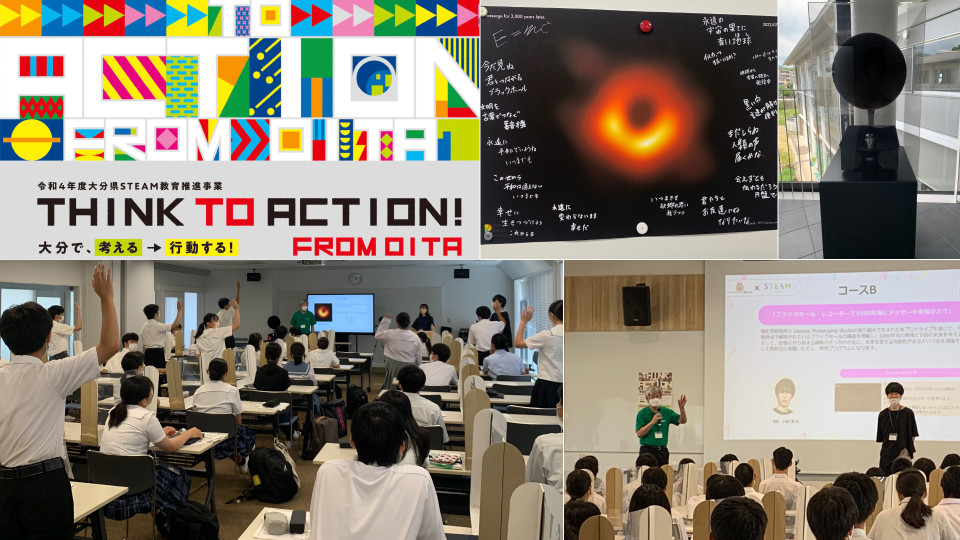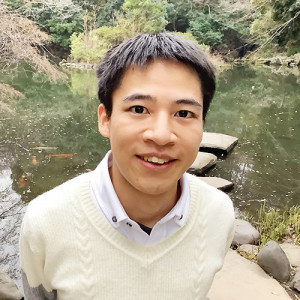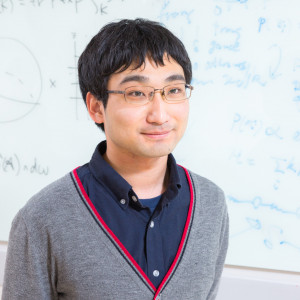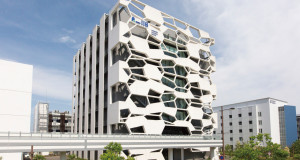Volume 213
Back to Newsletter List
Hot Topic
Oita STEM Festa was held at Oita City
2022-08-22
The Oita STEM Festa was held on 23 July 2022 at Oita city and Tetsuo Hatsuda from iTHEMS participated together with members from ADK Corporation. More than 50 high school students from Oita prefecture participated in Course B: "Let's deliver a message 1000 years from now using a black hole recorder” where the black hole recorder produced by the Useless Prototyping Studio was demonstrated. Also, the students were asked to write their Haiku to be recorderd in the black hole recorder.
Over 150 high school students participated in the Oita STEM Festa.
Course A: "Let's experience the lunar rover!, Course B: "Let's send a message 1000 years from now using a black hole recorder", Course C: "VR technology x solving social issues x SDGs", and Course D: "Let's think about jobs for Oita's future". iTHEMS was represented by Tetsuo Hatsuda and assistants Hitomi Wada and Chikako Ota contributed to the organisation of Course B on site.
Research News
RIKEN Research: Applying quantum speed limits to macroscopic systems
2022-08-26
An expression for the maximum speed at which changes in macroscopic systems can occur has been derived by a theoretical physicist at RIKEN. This will deepen our understanding of quantum phenomena in systems that are not in equilibrium.
One of the hardest aspects of quantum mechanics to grasp is the Heisenberg uncertainty principle that states that it is not possible to simultaneously pin down both the position and momentum of an object. In other words, the more precisely a particle’s position is determined, the broader the range of its possible momentum becomes (and vice versa).
In 1945, two physicists, Leonid Mandelstam and Igor Tamm, focused on another type of the uncertainty relation, namely one between time and energy fluctuation, and showed that transitions in quantum systems don’t happen instantaneously; rather, the speed at which a transition occurs is capped by an amount determined by how much the energy of the system fluctuates.
Many other so-called quantum speed limits have subsequently been derived, which have helped better understand the physics of quantum systems and have been useful in various quantum applications.
But big problems arise when quantum speed limits are applied to macroscopic systems. “Previous quantum speed limits, which are useful for small systems, typically become meaningless for macroscopic transitions,” notes Ryusuke Hamazaki of the Nonequilibrium Quantum Statistical Mechanics RIKEN Hakubi Research Team. “For example, conventional quantum speed limits give an infinite upper bound for the speed of transitions in a gas made up of atoms.”
To read more, please visit the related link.
Reference
- Ryusuke Hamazaki, Speed Limits for Macroscopic Transitions, PRX Quantum 3, 020319 (2022), doi: 10.1103/PRXQuantum.3.020319
Upcoming Events
Seminar
iTHEMS Biology Seminar
Loop structure via one sided loop extrusion with twist deformation
September 1 (Thu) 16:00 - 17:00, 2022
Hiroshi Yokota (Postdoctoral Researcher, RIKEN Interdisciplinary Theoretical and Mathematical Sciences Program (iTHEMS))
During cell division, a chromatin fiber condenses into the rod-like shape which is so called chromosome. The chromosome is composed of consecutive loop structures. Many researchers have been interested in the loop formation mechanism. The loop extrusion is the one of the promising hypotheses. However, the only loop extrusion does not completely explain the chromosome condensation dynamics. In order to tackle this problem, we constructed a mechanical model of the loop formation dynamics by focusing on the twist and writhe structures in DNA or chromatin. In this talk, I would like to explain the loop extrusion mechanism and our model.
Venue: via Zoom
Event Official Language: English
Seminar
ABBL-iTHEMS Joint Astro Seminar
Search for Galactic SNR PeVatrons: γ-ray observations in the vicinity of SNRs G106.3+2.7 & HB9
September 2 (Fri) 14:00 - 15:00, 2022
Tomohiko Oka (Ph.D. Student, Division of Physics and Astronomy, Graduate School of Science, Kyoto University)
Supernova remnants (SNRs) are believed to be the site of cosmic ray acceleration up to PeV (called PeVatron), but there is no conclusive observational evidence. The possible reason is that only young SNRs (t_age < 1 kyr) can accelerate CRs up to PeV, and then the particles escape at the early stage, thus, the opportunity to observe them is limited. To investigate this scenario, we observed and analyzed the following two SNRs.
First, we focused on SNR G106.3+2.7, the most promising SNR as a PeVatron, since 100 TeV gamma rays have been detected with air shower experiments. With the gamma-ray observation results, we discussed the origin of the PeV CR in the vicinity of this middle-aged SNR (t_age = 5-10 kyr) and then obtained the following interpretation: CRs accelerated at the SNR in the past are illuminating the molecular cloud and producing gamma rays at present. Second, we analyzed the observation data around SNR HB9 and newly found gamma-ray emissions outside the SNR shell at the molecular cloud region. The gamma-ray emission can be explained by the protons accelerated and escaped from the SNR in the past.
Therefore, we have attempted to measure the time evolution of the maximum acceleration energy at the SNR by comparing the gamma-ray spectra at the SNR shell and cloud regions. In this seminar, I will report the analysis results of those two SNRs.
Venue: via Zoom
Event Official Language: English
Workshop
DM3 - Deep insights and Multiple strategies for Deciphering the Mystery of Dark Matter
September 15 (Thu) - 17 (Sat) 2022
Venue: SUURI-COOL (Kobe), Room S704-S705, Integrated Innovation Building (IIB), Kobe Campus, RIKEN / via Zoom
Event Official Language: English
Paper of the Week
Week 4, August 2022
2022-08-25
Title: High-energy neutrinos and gamma rays from winds and tori in active galactic nuclei
Author: Susumu Inoue, Matteo Cerruti, Kohta Murase, Ruo-Yu Liu
arXiv: http://arxiv.org/abs/2207.02097v2
Title: ALMA detection of parsec-scale blobs at the head of kiloparsec-scale jet in the nearby Seyfert galaxy NGC 1068
Author: Tomonari Michiyama, Yoshiyuki Inoue, Akihiro Doi, Dmitry Khangulyan
arXiv: http://arxiv.org/abs/2208.08533v1
If you would like to cancel your subscription or change your email address,
please let us know via our contact form.
Copyright © iTHEMS, RIKEN. All rights reserved.





